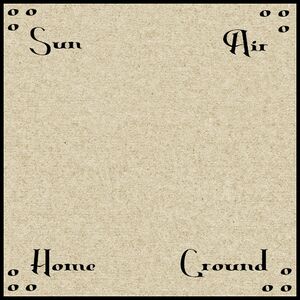Gliss script
Gliss script is the main writing system of Yammoe. It is over 4600 years old and dates back to the Dawn.
History and evolution
Writing system
Order of reading
TBD: Gliss script doesn't guarantee that the reader will read all sentences in a particular order.
Purposes and corners
Most symbols in Gliss script are glisses - symbols or pairs of symbols that represent meaning. When in pairs pairs, one symbol indicates "intent" and another "actor". Simplistically, "intent" and "actor" can be thought of as verb and noun.
In order for a gliss to have meaning, it must have a "purpose". The four purposes are:
- Sun - deals with "actors", which are entities which act or upon which an action is being made
- Air - deals with "concepts" or otherwise things that exist, but are not a physical object
- Ground - deals with an actor changing their state
- Home - deals with an actor changing their location
Purposes are defined by a plane, which maps purposes to the four corners. Depending on where the gliss is situated on the plane, it will have a different purpose. The location on the plane is given by a corner sign, that visually places the gliss in a particular corner.
For instance, two symbols that denote a hand and a person would have different, but related meanings in different corners:
Notice that in some cases one can combine corners by drawing a line. In the example above the line is on top of the gliss, meaning that the gliss would be located between sun and air on the plane.
Each purpose has three corners, so there are 12 corners altogether. Each group of 3 corners might be somewhat related. For instance, Home's corners are Direction, Location and Force. So, if we want to describe someone changing their location (going somewhere) or changing direction (someone turns left), we would use the respective corners of Home. However, Force is used to form comparatives (faster, stronger), but also to refer to aging, passage of time and order of objects (first, second). One can argue that Force is similar to Direction and Location in a sense that it also describes movement between various properties.
A corner sign with no additional symbols would mean the middle corner. An additional line would mean on of the other corners. In the example above, notice that agreeing with a person uses an additional line, to indicate a corner that is called "Thought" and deals with the changing of the state of mind: attitudes, opinions, beliefs, moods. If we would remove that line and instead use the middle corner, our gliss would attain the meaning of "honor person", frequently in the sense of promoting.
Tenses
Gliss script is tenseless, but it indicates the direction of time by the direction in which one reads the text. Left to right indicates present, right to left indicates the past.

